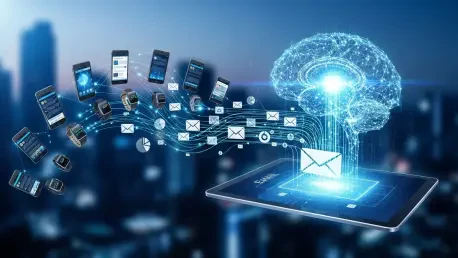Generative AI is revolutionizing the landscape of email marketing by enabling unprecedented levels of personalization and efficiency, helping marketers create tailored content that builds deeper connections with customers. This guide aims to assist marketers in harnessing the power of AI to transform their email campaigns, offering structured steps and insights to boost engagement, streamline workflows, and optimize results while navigating ethical challenges. The purpose of this guide is to demystify the application of generative AI, making it accessible for businesses of all sizes to enhance their communication efforts.
The significance of integrating AI into email marketing cannot be overstated in an era where consumers expect relevant, meaningful interactions. Traditional methods often fall short, delivering generic messages that fail to capture attention in crowded inboxes. Generative AI offers a solution by analyzing vast amounts of data to craft emails that resonate on a personal level, ensuring higher open rates and click-throughs. This guide provides a roadmap for marketers looking to stay ahead of the curve, detailing practical applications and highlighting the balance between innovation and responsibility.
Revolutionizing Customer Connections with AI-Driven Email Strategies
The advent of generative AI marks a turning point for email marketing, shifting it from a broad, impersonal tool to a highly targeted means of engagement. This technology empowers brands to move beyond static templates, creating dynamic content that speaks directly to individual preferences and behaviors. By leveraging AI, marketers can turn every email into an opportunity to strengthen customer relationships, making recipients feel understood and valued.
At the heart of this transformation is the ability of AI to process complex datasets, uncovering insights that inform personalized messaging. This capability not only enhances the customer experience but also drives measurable outcomes like increased conversions and loyalty. The impact extends beyond content creation, touching on automation, creative exploration, and data optimization as key pillars of modern email strategies.
This guide will explore these critical areas, providing a clear framework for implementation. From crafting emotionally resonant content to automating repetitive tasks and addressing ethical considerations, each aspect will be broken down to ensure a comprehensive understanding. Readers will gain actionable insights into how AI can redefine their approach, setting the stage for long-term success in a competitive digital landscape.
The Evolution of Email Marketing: From Static to Smart with AI
Email marketing has undergone a significant transformation in recent years, evolving from basic, uniform campaigns to sophisticated, adaptive communications. In its early stages, the focus was on mass distribution with little regard for individual recipient needs, often resulting in low engagement. The introduction of data analytics brought some improvement through manual segmentation, but it remained labor-intensive and limited in scope.
The emergence of generative AI, particularly large language models like GPT, has redefined the possibilities within this space. These tools enable hyper-personalization by interpreting user data at scale, allowing for emails that adapt to specific interests and behaviors in real time. This shift represents a move toward empathetic communication, where messages are not just informative but also emotionally compelling, fostering a stronger bond with audiences.
Looking at current trends, the reliance on AI continues to grow as marketers recognize its potential to handle complex tasks with precision. From predicting optimal send times to tailoring subject lines, the technology offers a level of customization that was once unimaginable. This evolution underscores the importance of adapting to AI-driven methods to remain relevant, providing a foundation for the practical steps that follow in this guide.
How Generative AI Enhances Email Campaigns: A Step-by-Step Breakdown
This section provides a detailed, actionable process for integrating generative AI into email marketing efforts. Each step focuses on a specific application, offering clear instructions and practical tips to ensure effective implementation. By following these guidelines, marketers can maximize the impact of their campaigns while maintaining efficiency and authenticity.
Step 1: Crafting Hyper-Personalized Content
Begin by utilizing AI to analyze customer data, such as browsing history, purchase records, and interaction patterns, to create content that feels uniquely personal. Generative AI tools can process this information to draft emails that address specific needs or interests, making each message stand out. The goal is to evoke a sense of connection, ensuring recipients see value in every communication.
Leveraging Data for Emotional Storytelling
Dive deeper into data analysis to construct narratives that resonate on an emotional level. AI can identify key themes or pain points from user behavior, weaving them into compelling stories within emails. For instance, referencing a recent purchase or abandoned cart with a thoughtful follow-up can significantly boost click-through rates, as it demonstrates a genuine understanding of customer journeys.
Avoiding Over-Personalization Pitfalls
Exercise caution to prevent personalization from becoming intrusive, as overly specific content can erode trust. Striking a balance is crucial—focus on relevant insights without crossing into private territory. Regularly review customer feedback and opt-out rates to gauge comfort levels, adjusting AI parameters to prioritize privacy while maintaining engagement.
Step 2: Automating Workflows for Efficiency
Next, leverage AI to automate repetitive tasks, freeing up time for strategic planning. From drafting initial email copy to scheduling sends, AI tools can handle these processes with minimal human input. This step is about enhancing productivity, allowing teams to focus on higher-level tasks like campaign analysis and creative direction.
Speeding Up Content Creation
Explore tools like ChatGPT or Copy.ai to generate polished email content in a fraction of the time. These platforms can produce subject lines, body text, and calls to action tailored to specific audiences almost instantly. Test different outputs to ensure quality, and refine prompts to align with campaign goals for optimal results.
Dynamic Scheduling and Segmentation
Implement AI-driven scheduling to determine the best times for sending emails based on historical engagement data. Additionally, use dynamic segmentation to categorize audiences in real time, ensuring messages reach the most relevant recipients. Monitor performance metrics to fine-tune these settings, adapting to changing user behaviors for maximum impact.
Step 3: Boosting Creativity with Diverse Content Options
Encourage creative exploration by using AI to generate multiple email variations in tone, style, and structure. This approach helps overcome blocks and introduces fresh perspectives to campaigns. Experimentation becomes less daunting when technology can quickly produce diverse options for consideration.
Generating A/B Testing Variations
Utilize AI to create distinct versions of email content for A/B testing, enabling rapid comparison of different approaches. For example, test a formal tone against a conversational one to identify what resonates most with the audience. Analyze results to inform future content decisions, ensuring continuous improvement in engagement rates.
Maintaining Brand Voice Consistency
Ensure that AI-generated content aligns with the established brand voice by using platforms like Jasper AI, which can be trained on specific guidelines. Input clear instructions about tone and messaging priorities to maintain consistency across all outputs. Regularly audit these outputs to confirm they reflect the brand’s identity, making adjustments as needed.
Step 4: Optimizing Campaigns with Data-Driven Insights
Focus on refining email strategies through AI’s predictive analytics and real-time feedback capabilities. This step involves using data to anticipate what works best and adapting campaigns accordingly. Optimization ensures that efforts remain relevant and effective in a constantly shifting digital environment.
Predicting Optimal Campaign Elements
Harness AI to analyze past campaign data, identifying patterns that predict successful elements like subject lines or content themes. Use these insights to inform future emails, increasing the likelihood of high engagement. Continuously update datasets to keep predictions accurate, reflecting the latest audience trends.
Adapting with Real-Time Feedback Loops
Incorporate real-time feedback mechanisms where AI adjusts campaigns based on live performance metrics, such as open rates or click activity. If an email underperforms, the system can suggest immediate tweaks, like revising a call to action. Stay proactive by monitoring these adjustments, ensuring they align with broader marketing objectives.
Key Takeaways: Core Benefits of AI in Email Marketing
This section condenses the primary advantages of generative AI in email campaigns into a concise list for easy reference:
- Hyper-Personalization: Tailors content to individual preferences, enhancing emotional connection and engagement.
- Workflow Automation: Saves time by automating content creation, scheduling, and segmentation.
- Creative Innovation: Generates diverse email variations, overcoming creative fatigue and supporting testing.
- Data-Driven Optimization: Improves campaign performance through predictive analytics and real-time adjustments.
- Scalability with Brand Consistency: Ensures high-quality output at scale while maintaining a unified brand voice.
Broader Impacts and Future Trends in AI-Powered Email Marketing
The adoption of generative AI in email marketing reflects a larger shift toward intelligent, data-centric ecosystems within the industry. Integration with platforms like CRM systems and chatbots allows for seamless customer journeys across multiple touchpoints. This interconnected approach amplifies the effectiveness of campaigns, creating a cohesive experience that retains audience interest.
Looking ahead, advancements such as hyper-personalized predictive storytelling are set to redefine engagement standards. Marketers can expect AI to anticipate customer needs with even greater accuracy, crafting narratives that evolve with user interactions. Staying informed about these developments, especially from now through the next few years, will be crucial for maintaining a competitive edge in this space.
Challenges like data privacy and bias mitigation remain pivotal areas of focus. Ensuring compliance with regulations and fostering transparency in data usage are non-negotiable for preserving consumer trust. Addressing these issues proactively, alongside building AI literacy among teams, positions marketers to leverage technology responsibly while driving innovation.
Embracing AI in Email Marketing: Final Thoughts and Next Steps
Reflecting on the journey through this guide, the steps taken to integrate generative AI into email marketing have paved the way for remarkable transformations in personalization and efficiency. Each phase, from crafting tailored content to optimizing with data insights, has contributed to a deeper understanding of how technology can enhance customer connections. The process has demonstrated that AI is not just a tool for automation but a catalyst for meaningful engagement.
As marketers move forward, exploring AI solutions like ChatGPT or HubSpot AI Assistant offers a practical starting point for experimentation. Diving into personalization strategies with a focus on ethical data usage ensures that innovation does not come at the expense of trust. Committing to ongoing learning about AI advancements prepares teams to adapt to emerging trends, strengthening their ability to build lasting relationships.
The next chapter involves a deeper investment in balancing technological capabilities with human oversight. Prioritizing regular audits of AI outputs for bias and authenticity maintains campaign integrity over time. By fostering a collaborative environment where AI and human creativity work in tandem, marketers set the stage for sustained success in creating impactful, empathetic email communications.









